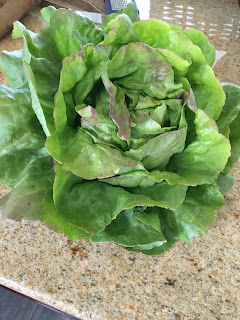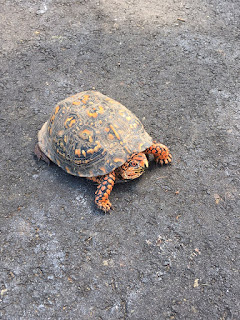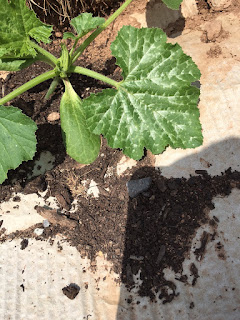As rewarding as gardening is, it can also be hard. Many gardening activities require us to bend our neck and back. What happens when you constantly put your body in incorrect posture ? The neck and back vertebrae may lose their curvature, or you may get a pinched nerve in cervical or lumbar region. Makes me think if gardening is really a healthy profession. Unless one is using all mechanized machines, bending and manual work are hard to avoid. Instead of saying "It's part of the job and if I can't do it, I am not fit for farming", correcting things and taking care of oneself should be done intently to be our best selves. In every profession, there are times and situations which take a toll on our bodies. Slowing down to think what can be done to minimize the stress on body without missing the things we love to do, should as much be a priority as the profession itself.
The thing that is hard to escape while working in a garden or farm is the bending involved. Seeding - bend, digging- bend, lay plastic mulch manually- bend, weeding - bend more. This happens more in a garden that is new and was never used before. Weeds and grass in first year in such a garden take over the land in no time.
Injury, aches and sprains can be avoided/minimized by taking certain measures in addition to giving your body a rest. While working long hours outside already burns calories, other forms of activities are needed to keep one's body in a good shape. Sitting in a slouched position in front of a TV with a chilled beer in hand while resting from outdoor activity isn't doing any good to your body (I am not saying don't drink chilled beer). Keeping your body fit for work requires a bit more effort. A daily routine of exercises like pilates or yoga does wonders to the entire body. An hour of these exercises after an intense day of work in the garden or farm is a good daily practice. Additionally, summers are a good time to take an evening stroll after a hard day of garden work. Walking keeps spine supple.
And for the sun..... I prefer working early mornings or late evenings. Mornings are peaceful, evenings are cool and refreshing. This is not just to avoid sun tan. Tanning is not my problem, sun-burn and rashes resulting from it, is. Skin is our largest organ and it takes the most burn from everything we expose ourselves to. I prefer to cover my head while working in hot sun. If we do however decide to work in the afternoons, keeping oneself hydrated is a must. I am sensitive to sun and get headaches when exposed to direct sunlight for more than an hour (as much as I love beaches, I can't enjoy much at a beach on sunny days). Hence, I try hard to protect myself from strong sunlight whenever (and however) possible. Protective clothing is a must even if we slather sunscreen like mayonnaise on face and neck.
This pair of work gloves I purchased an year ago worked extremely well for me. Most stores do not sell gloves for small hands. Not all of us like to wear gloves while working in the garden. The touch of soil feels nice to hands. I agree. I wear gloves to keep hands a little clean especially if I am handling perlite, lime or neem oil.
Is there a way to avoid the constant bending for long hours everyday ? Depends on the kind of garden and frequency of tasks involved. Permanent raised beds may prove better for one's back than sowing directly in soil. I do not have the raised beds. (I didn't want to build permanent immovable structures at this time) While doing most of my garden chores that involve bending, I prefer to sit cross-legged on a mat than stooping over in an arched position. It is an easy position and does not put strain on my knees and back. (The mat saves me from ant bites) I do this while seeding too. For tasks like seeding, having a table that is waist height or above to keep the materials will avoid bending over repeatedly to fill soil in seed trays. Buying a stool is another good option to support back and knees. Most plastic stools break from your own weight. Some stools, like the one I brought
here, are robust, move easily and have a little storage space for tools. However, they are hard to assemble and when fully assembled, have a height which is too high (Except maybe sitting on the stool and doing pruning or watering).
Remaining healthy and strong is something we all must consciously practice as a life long habit. Our ability to do things that we love depends on how much our bodies can support. Poor posture for a period of time leads to conditions in which pain management remains the only option. Taking care of the body is a prevention that is better than wandering for a cure.
What do you do when you work outside for long hours ? I would love to hear thoughts.
Stay strong, healthy and enjoy all that summer has to offer.











